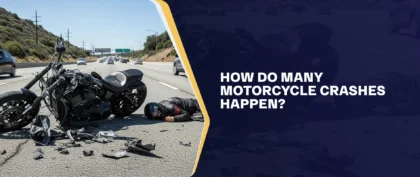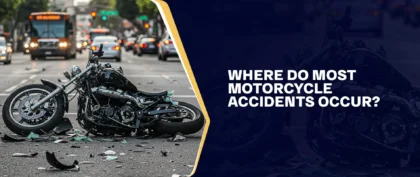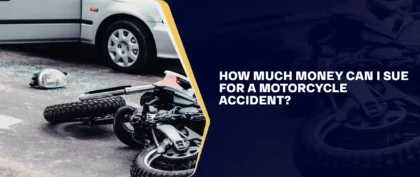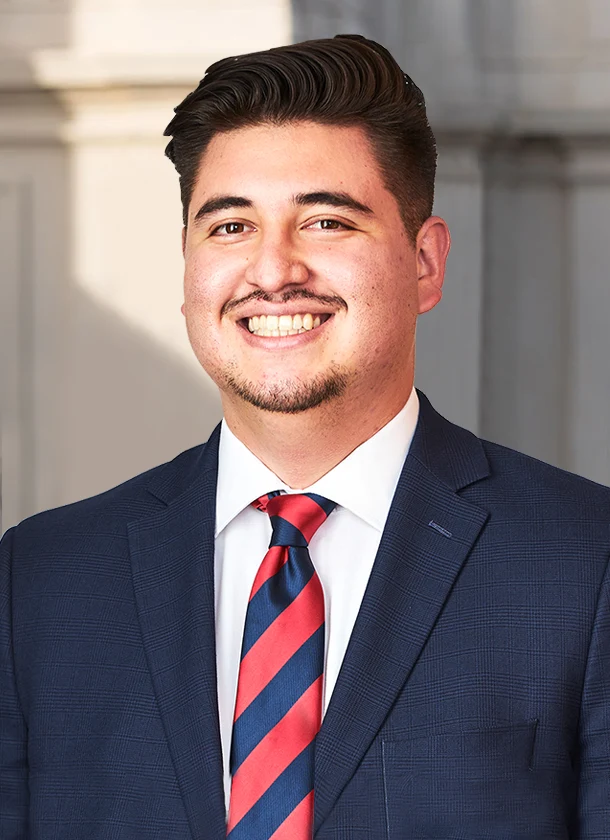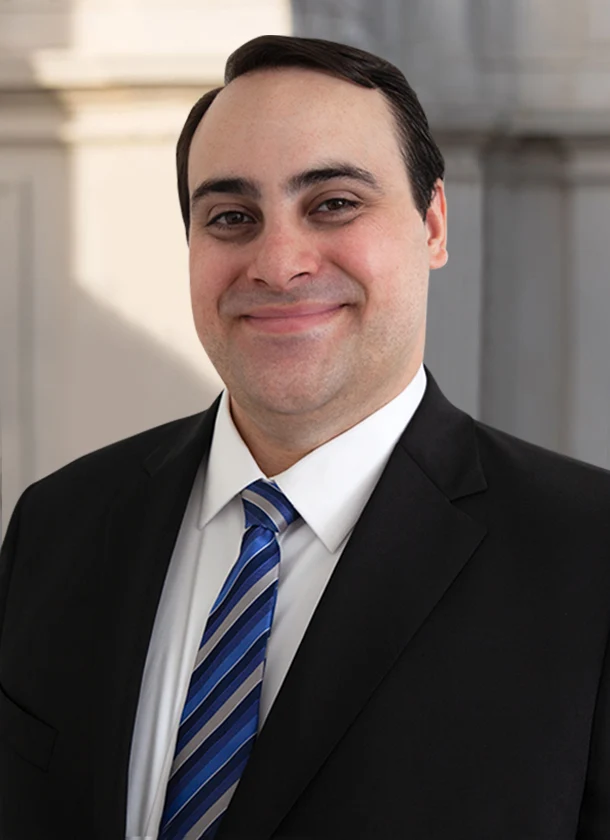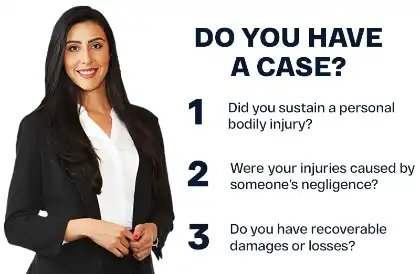Table of Contents
Motorcycle Accidents In California — How To Prevent Them
California is a very popular place for motorcyclists, and it’s easy to see why. This popularity is due, in large part, to the delightful weather motorcyclists can enjoy all year round. Unfortunately, the large number of motorcycles on California roads increases the risk of collisions.
Understanding why motorcycle accidents happen in California is important to help investigators uncover details about who was at fault. Below, you’ll find in-depth information on motorcycle accidents and how they are investigated in California.
What Causes Motorcycle Accidents In California?
There are a variety of reasons why motorcycle accidents occur. Making a sharp turn too quickly and hitting the gravel can result in minor injuries, even if the driver was riding at a low speed. At faster speeds, poor road conditions, and vehicle failure can lead to motorcycle accidents.
However, many serious motorcycle accidents are caused by external factors beyond the rider’s control. These incidents may involve other drivers and result in severe consequences for the motorcyclist. Some accidents can be caused when a motorist changes lanes directly in front of the motorcycle. An accident can also be caused when a vehicle hits a motorcycle from behind. Usually, drivers may not see the motorcyclist or may become distracted before a collision.
Tips For Prevention
Since some motorcycle accidents are caused by other motorists rather than the riders themselves, motorcyclists must be active in driving defensively at all times. The first important safety tip for all motorcyclists is to wear a helmet. It goes without saying that wearing a helmet can help prevent the risk of serious injuries, such as trauma, concussions, and chronic brain injuries, during a collision. Motorcyclists must be aware of their surroundings and try to make themselves more visible to other motorists, especially in the dark.
Not drinking and riding is an important safety tip, as many motorcycle accidents involve alcohol. Of course, abiding by the rules of the road and using your motorcycle in a safe manner can help reduce the chances of a serious accident as well. California has become the first state in the country to explicitly allow lane-splitting for motorcyclists. This law has been long overdue and is already allowed in other continents, such as Asia and Europe.
Lane-splitting, also known as stripe-riding or lane-sharing, happens when a motorcyclist rides between rows of slow-moving or stopped traffic in the same direction. In California, lane-splitting does not give motorcyclists a free pass to ride dangerously through traffic. Instead, it should only be practiced with caution in situations where it’s necessary.
Does Lane-Splitting Cause Motorcycle Accidents In California?
Lane-splitting can cause motorcycle accidents when it’s done improperly. In a traffic jam, motorcyclists can easily weave through traffic and get to where they’re going. In other situations, this practice can be considered dangerous and should be avoided.
Studies on lane-splitting and collision rates have shown mixed findings, with safe riding techniques playing an important role. Again, it’s up to the rider to assess the risk of lane-splitting and perform the practice only when necessary.
Lane-Splitting Facts
Vehicles are naturally required and will share the road with motorcycles in traffic. This sometimes leads to conflict. Some drivers may feel frustrated when they see motorcyclists try to pass them or lane-split.
This is especially true in a traffic jam. While some drivers don’t intentionally want to cause a wreck, actions like speeding up near a motorcyclist can increase the risk of a collision.
Additionally, a lot of drivers can’t see motorcyclists in their blind spots, as opposed to other cars and trucks. Bikers who regularly engage in lane-splitting may want to consider making their motorcycle louder for other motorists to notice them.
When Is Lane-Splitting Permitted?
In California, lane-splitting is permitted only when there is slowed or stopped traffic in the same direction. Bikers should not engage in lane-splitting when traffic is going at or near the legal speed limit. To avoid a serious collision, motorcyclists are strongly advised to reduce their speeds when lane-splitting to no more than 10 mph above the speed of traffic. Other motorists perceive lane-splitting to be overly risky and even dangerous.
On the other hand, lane-splitting may provide certain advantages for bikers rather than sitting in congested traffic. In fact, the American Motorcyclist Association has provided its support for lane-splitting when done with proper caution. Congested traffic is dangerous for bikers because of the safety concerns involving rear-end accidents. Rear-end accidents are among the common types of auto collisions.
These accidents usually happen during rush hour when vehicles are bumper-to-bumper, and there is a small margin of error. A rear-end motorcycle accident could lead to two deadly situations.
- A motorcycle “tapped” from behind by a vehicle at low speed can be knocked off its bike.
- A motorcycle rammed from behind by a vehicle at moderate or high speed can be thrown several feet into oncoming traffic.
Is Lane-Splitting Legal In California?
In 2016, Governor Brown signed Assembly Bill 51, which defined the practice. The legislation provided the California Highway Patrol with the authority to produce guidelines for safety regarding lane-splitting. California is the only state that explicitly permits lane-splitting for motorcyclists, unlike other states. Although lane-splitting is technically legal in California, bikers can be charged with traffic violations while engaging in the practice.
Typical traffic violations while lane-splitting include:
- Following too close
- Speeding
- Unsafe lane changes
Does Lane-Splitting Lead To More Accidents?
The answer to this question is unclear, with both possible answers being unsupported. Proponents of lane-splitting argue that it can be done safely and may provide protective benefits for motorcyclists. Opponents of lane-splitting claim that it’s dangerous because other motorists may not see bikers. Lane-splitting can lead to a vehicular accident, but so can other driving activities. More often than not, motorcyclists can suffer more significant injuries in a collision, and some bikers may try to avoid putting themselves in that kind of position by being overly reckless.
Who Is Usually Responsible For Lane-Splitting Accidents?
Like other traffic accidents, police officers are responsible for investigating the cause of the crash and may provide an opinion about fault when deciding whether to issue a citation. Assessing fault can be much more complicated, and incorrect judgments may be possible. A motorcycle accident lawyer can conduct an extensive investigation to help assess the facts of an accident.
Sometimes, accident reconstructionists can analyze the components and facts of a motorcycle accident to help determine what really happened and who was truly at fault. With California being a pure comparative negligence state, determining the cause of a motorcycle accident is critical. Any type of fault given to a person involved in a motorcycle accident can lower the amount of compensation they can pursue.
With that said, each party will need to compile evidence that demonstrates that the other party was either completely or mostly at fault for the collision to be able to pursue compensation for losses and injuries. In certain cases, there may be multiple parties at fault for causing an accident.
In addition, motorcyclists who engage in lane-sharing may sometimes be assigned fault for an accident, even when it is not warranted. Every motorcycle accident is different, and consulting a lawyer can help clarify liability and support your claim.
Establishing Fault — How Motorcycle Accidents Occur
In the beginning stages of filing a California motorcycle accident claim and seeking compensation for the losses caused by an accident, it’s first pivotal to understand how fault is assessed. California is an at-fault state or a tort-liability state. This means that the liability for damages in the aftermath of a motorcycle accident is dependent on the party that’s at fault.
Under comparative negligence, which is the legal precedent in California, the plaintiff’s awarded compensation can be reduced according to their degree of fault. For this reason, accurately assessing fault is crucial, as some motorcycle accidents are caused by the actions of other drivers. If you’ve suffered serious injuries and damages, it’s important to seek accountability from the at-fault party for the harm they caused.
Examples of common errors that cause motorcycle accidents include:
- Speeding
- Driving while intoxicated
- Driving while distracted
- Failing to yield
- Driving aggressively
- Illegally changing lanes and tailgating
Sometimes, a third party, such as individuals or entities responsible for road maintenance or the vehicle manufacturer, could have contributed to the cause of the accident.
Determining The Value Of A Motorcycle Accident Claim
In addition to establishing that the other party was completely or mostly at fault for your motorcycle accident, you also have to provide evidence highlighting the degree of damage you suffered due to the collision.
Motorcyclists involved in an accident may suffer worse injuries than the other party due to a lack of protection. This is especially true when the biker isn’t wearing a helmet. Typical motorcycle accident injuries include:
- Spinal cord injuries
- Internal injuries (bleeding)
- Bone fractures
- Neck and back injuries
- Scalp and facial injuries
- Head and traumatic brain injuries
- Road burn/rash Injuries
- Soft tissue injuries
- Loss of use of limbs and amputation
These serious injuries are not the only consequences of a motorcycle accident. These injuries can also result in emotional anguish and physical pain over a long period of time. Some victims may also experience pain and suffering or develop long-term disabilities after a motorcycle wreck. Perhaps the most severe consequence is physical impairments that can prevent the biker from returning to their normal life, working a normal job, and maintaining normal relationships with family, friends, and loved ones.
Financial losses, such as medical bills, lost wages, and rehabilitation expenses, can add up and overwhelm bikers. Depending on the specifics of the case, motorcycle accident victims may be able to pursue the following damages:
- Physician expenses
- Emergency room treatment expenses
- Ambulance/emergency transport expenses
- Surgeon expenses
- Anesthesiologist expenses
- Physical therapy
- Lost wages and benefits
- Pain and suffering
- Emotional trauma
- Prescription medications
- Hospital stays
- Assistive devices
If you require ongoing care or need future treatment, your California motorcycle accident attorney may take into consideration the following damages as part of your claim:
- The estimated value of future benefits and wages.
- Diminished earning capacity and potential.
How To Document And Support Your California Motorcycle Accident Claim
A well-supported motorcycle accident claim is vital in pursuing compensation for your injuries and losses. Typical elements of evidence include:
- Police reports
- Medical records
- Accident scene reconstructions
- Income statements
- Witness statements
- Accident scene photographs
Consider hiring a motorcycle accident attorney who can gather extensive evidence to support your claim. Collecting evidence promptly helps preserve key details that may be lost or degraded over time.
Valuable testimony can be gathered from the following resources:
- Doctors — A doctor can provide testimony and professional opinions regarding the extent of treatment you received, future treatment, and the nature of your injuries.
- Economic Experts — Economic professionals can determine the value of opportunity losses, benefits, and future income.
- Vocational Professionals — They can provide testimony about changes to your earning capacity and any accommodations you may need to perform your job.
- Life Care Planners — These professional planners can provide insight into the extent and type of care you may need if you’re not capable of caring for yourself to some extent.
What To Do After A Motorcycle Crash
Taking the following steps may help document information to support your potential claim:
- Call the police and report the accident.
- Seek medical care.
- Exchange necessary information with the other motorists.
- If you can, gather evidence at the scene of the accident. For example, take pictures of the aftermath of the accident, your injuries, and damage to your vehicle.
- Call your insurance company and report the accident.
With that said, below are some important things to note:
- Do not admit fault.
- It is important to keep in mind that the insurance company may assess the available evidence to validate your claim.
- You don’t have to accept the first settlement offer. Consider consulting with an attorney who can evaluate your case, assess your damages, and help you make informed decisions.
- You generally have two years from the date of the accident to file a claim.
Contact Our California Motorcycle Accident Lawyers
Being involved in a motorcycle accident can be a traumatic experience. At Arash Law, we’re committed to helping motorcycle accident victims pursue compensation for their losses. Our team is focused on advocating for the rights of our clients and helping them seek accountability against negligent parties. To schedule a free initial case evaluation with an attorney, contact Arash Law at (888) 488-1391 or complete our “Do I Have A Case?” form here. Our law firm also has car accident lawyers, truck accident lawyers, motorcycle accident attorneys, and injury attorneys focusing on hit-and-runs, workplace accidents, slip-and-fall cases, dog bite claims, and more.




